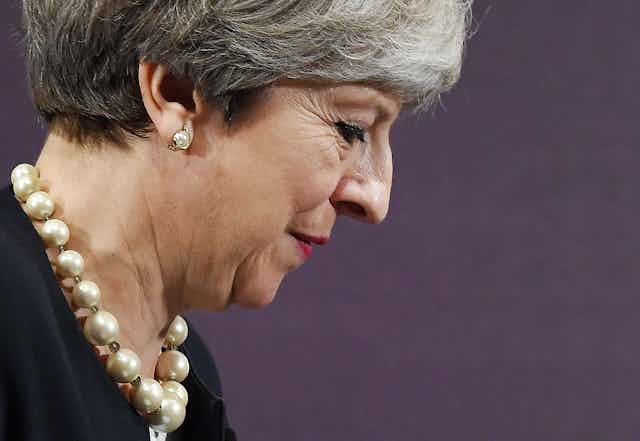Party conference season is an important opportunity for the UK’s political parties to present themselves as responsible and trustworthy brands. The events are carefully planned public relation exercises designed to unite the party faithful and project a unified agenda for government to the public at large.
The Labour conference has already been hailed as a great success for Jeremy Corbyn and his party. So what should Theresa May do to follow suit? She has an opportunity to reposition the Conservative brand as competent, compassionate, engaging and professional to help recapture lost ground following the election. She should aim to reconnect with voters by outlining a clear, consistent identity, a focused vision for the country and appeal beyond the party faithful.
In order to achieve this rebranding, she should follow these simple steps.
The Maybot is sorry
At the Conservative conference, May is expected to publicly apologise for calling a snap general election in June. She’ll also pay tribute to former colleagues who were unseated by Labour and Liberal Democrat candidates. This humble first step is crucial in acknowledging she got it wrong when she triggered the vote on the advice of a small, closed clique around her rather than listening to her cabinet.
If May can convince conference attendees she is sorry, has reflected on the past five months and has learnt from this episode then it may go some way in securing forgiveness from the party faithful. It could also help reassure voters that she does possess human qualities despite her personal brand being tainted by accusations of being “robotic”.
Clarity on policies
May should put forward clear pledges and well-thought-out policies to appeal to all sections of society. Voters need functional reasons to vote for the Conservatives in future elections. This was missing in the snap general election. Slogans such as “strong and stable leadership” and “in the national interest” were initially eye-catching but needed to be substantiated with practical information that the public could clearly understand.
In contrast, Labour successfully put forward simple, populist propositions that appealed to voters. These were connected around a clear and concise theme of “for the many and not the few”. This coherent approach was echoed at its party conference.

Nevertheless, questions about how Labour would fund its policies and whether it can be “trusted” to regain the keys of the Treasury remain. To capitalise on this uncertainty, May should communicate a clear confident positive message reinforced with believable fully costed policies. These should be united by a common concise theme.
The slogan “strong and stable”, however, should be avoided. It would only remind voters of the failed election and may raise questions whether May’s humility is genuine.
Broaden the brand
The prime minister should emphasise the collective talent and experience of her cabinet rather than focusing solely on her leadership. David Cameron regularly presented the “Conservative team”, emphasising that it included members from all walks of life and backgrounds. He also often acknowledged that the Conservative party was a broad church of people with similar yet distinct characteristics, united around values such as aspiration, strong economic competence and compassion.
He managed to successfully reposition the Conservative brand using this tactic. What was often referred to as “the nasty party” became an entity of “change and hope”. This translated into success at the polls in 2010 [to a degree] and in 2015.
However, May can’t simply copy and paste “change and hope” from David Cameron’s campaigns and count on success. She must find her own position in the minds of supporters and voters.
Realistically, May and the Conservatives will have to develop their clear consistent offering, recruit new candidates and supporters and unite the party at large by the end of the year or by early next year in anticipation for the next election. Corbyn’s Labour are said to be in the final stages of selecting all constituency candidates ready to fight the the election, whenever it is called.
Even if the election is not held until 2022, the Conservatives still need time to reconnect with voters at a grassroots constituency level. They need to find credible candidates who will not only communicate localised Conservative policies but will also form relationships with constituents. Trust and relationships can only be established over time and if May’s Conservatives want to remain in power, then this should be a core feature of the mission to reposition the party’s brand.

